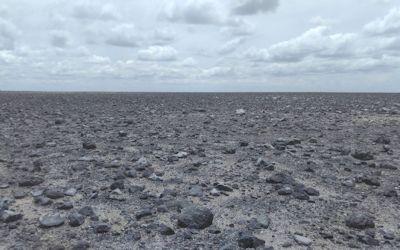You are here
- Home
- Exploration Fieldwork in the Kalahari Desert, Botswana
Exploration Fieldwork in the Kalahari Desert, Botswana

Twenty thousand years ago, the area of what is now the Ntwetwe and Sua salt pans in Botswana was submerged beneath a lake the size of Switzerland. Tectonic activity and climate change (extensive dry seasons) drained the lake over ten thousand years, resulting into the formation of the salt pans, an extremely arid place, bathed in high UV radiation and little vegetation.This area, which is now described as the Makgadikgadi paleolake, or salt pans, has been identified as a potential martian analogue.
In January 2020 the AstrobiologyOU team, in collaboration with the University of Bologna and the Botswana International University for Science and Technology, conducted an exploratory field campaign to investigate the adaptation strategies of microbial life embedded within the paleolake sediments and thriving on the surface of the salt pans.

We will explore which microorganisms live there, the metabolisms driving those communities and their strategies to cope with the extreme conditions of the Kalahari Desert (desiccation, high salinity, high UV radiation). Answers to these questions should provide insights on how life could survive and adapt to extra-terrestrial environments, such as present and past Mars.

Latest News
- Intern Opportunity at ESTEC 10th November 2023
- CALICO: A Future Mission Review at ESA 23rd May 2023
- Join our team as a PDRA - CLOSED 9th February 2023
- PhD studentships now OPEN for applications 1st November 2022
- Senior Fellow Position **Closed to Applications** 20th September 2022